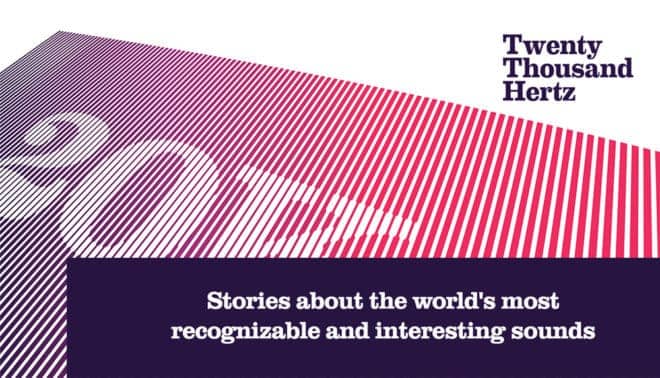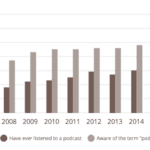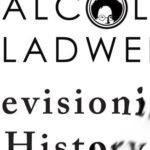Twenty Thousand Hertz Podcast to join TED Podcast Network and celebrate its 100th Episode

It’s too limiting to define Twenty Thousand Hertz as a “music” podcast as some podcast player apps do in their genre classification.
In reality, it’s a podcast about sound. The podcast invites listeners on a sonic journey from places as distant as space and asks if sound is relevant there and then to places as familiar as the movies where one scream – called the Wilhelm Scream – is still used thousands of times in movies and TV.
On Wednesday, August 5th, Twenty Thousand Hertz became part of a new family of podcasts being launched by TED. TED is a nonprofit devoted to spreading ideas, usually in the form of short, powerful talks (18 minutes or less). Popular TED podcasts include The TED Radio Hour, Worklife With Adam Grant and TED Interview.
That same day, the series celebrated its 100th episode by dissecting the sonic brand of Netflix. It includes interviews with the company and a breakdown of a familiar audio logo to millions of Netflix subscribers. The Netflix sonic signature consists of those two bass-heavy hits you hear when you open the app or watch any of their content.
A sonic boom
Twenty Thousand Hertz began as a podcast in 2016 with its first episode exploring the voice of Siri. The podcast related the story of voice actor Susan Bennett, who in July 2005 spent four hours a day inside a recording booth, reading pages upon pages of strange phrases for an unnamed project. This kind of script was common for GPS devices and company telephone system recordings, so she didn’t give it much thought.
The creator and host of Twenty Thousand Hertz isDallas Taylor, who is the Creative Director of Defacto Sound, where he has led thousands of high-profile projects ranging from blockbuster trailers and advertising campaigns to Sundance award-winning films and major television series.

Taylor’s mission is to elevate our cultural sonic consciousness to the same level as our other four senses. Consequently, his curiosity into all things sonic has led him to episodes that investigate everything from the origin of the Seinfeld TV theme by Jonathan Wolf to the origin of one of the most iconic drum machine ever developed – the 808.
As a host, Taylor is superb with a deep, resonant quality to his voice and a narrative style that steadily builds interest, drama and inspiration through a crescendo of sound and sentences. In episode 49, for example, Taylor takes listeners on a magic carpet ride through famous advertising jingles we collectively recall and asks what happened to the jingle in modern advertising and why has it all but disappeared.
In episode 17, Taylor helps us to understand forensic audio evidence and reviews audio from the missing Malaysian Airlines flight and actor Mel Gibson’s infamous domestic dispute.
The podcast never slips into a routine because Taylor refuses to limit his vision of the sonic journey.
For example, episode 94 exposes us to the universe of Star Wars sounds and how legendary sound designer Ben Burtt created the sounds of Star Wars essentially from a blank slate. From imperial fighters zooming past planets called gas giants, Taylor, in the very next episode, explores the human fascination with our own gas via the simple whoopee cushion, making fart noises.
Taylor even excelled guesting on other podcasts, joining the hosts of Switched on Pop, a Vox music podcast, in October 2019 to discuss the intricacies of mastering a recording. On the episode, Taylor guides listeners through the technical aspects of mastering a recording and how a master can dramatically affect the sound of a song. In the episode, Taylor interviews rapper DJ Jazzy Jeff and discusses his well-known song – He’s the DJ, I’m the Rapper – and how the rapper feels the master ruined the deep, throaty sonic signature of the tune.
Building an audience
Since its inception in 2016, Twenty Thousand Hertz has organically grown its audience to hundreds of thousands of listeners per episode. Earlier this year, Esquire named Twenty Thousand Hertz one of best podcasts of 2020 and the podcast has wonback-to-back Webbys for Sound Design & Science/Education as a completely independent production.
The Guardian U.S. Edition praised the podcast by writing, Taylor’s love of everyday noises knows no bounds and every time he reveals another surprising, inspiring story about an interesting sound, whether immediately recognizable or rarely noticed, it illustrates how the things we hear are just as powerful, nuanced and attention-worthy as what we all love to see, taste, touch and smell.”
Although there are over a million podcasts, a tiny minority of podcasts actually make it to 100 episodes and it’s clear that Twenty Thousand Hertz hasreached that tipping point in artistic maturity, pop culture buzz and attracting more ears every episode. In fact, some of the podcast’s new episodes have been featured in Entertainment Weekly, Nerdist, Boing Boing, Mental Floss and more.
Part of a network
As podcasts continue to grow in popularity, industry consolidation has picked up speed with large players like Spotify, Sony, Sirius XM, adding to their networks via mergers and acquisitions. Twenty Thousand Hertz matches the TED roster of podcasts with its thoughtful and expansive exploration of our world and the TED partnership will no doubt amplify the revelatory potential of opening up our ears.
Earlier this year, Dallas Taylor delivered a TED Talk as a Mainstage Speaker at TED 2020 and contributed to conversations with publications such as the Wall Street Journal, Washington Post, and LA Times.
So far, podcasts that have joined larger networks have prospered, largely due to greater resources in story development, audio, marketing, advertising and episode budgets. For example, Switched on Pop, the music podcast with Charlie Harding and Nate Sloan, has blossomed under the aegis of the Vox podcast network. Likewise, Science Vs, an Australian science podcast, has grown its audience and its editorial capabilities as part of Gimlet.
In a multitude of ways, Twenty Thousand Hertz is perfectly suited to the podcast universe. It’s a podcast about sound via an exclusively audio medium. What makes the podcast so exceptional beyond its sonic subject matter is the vision of its creator, Dallas Taylor, who refuses to be silenced in his quest for sonic revelations.













Comments
Comments are closed.